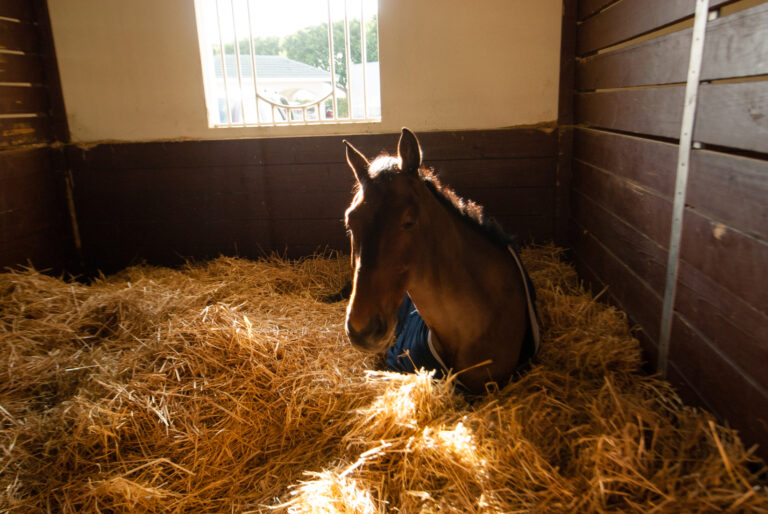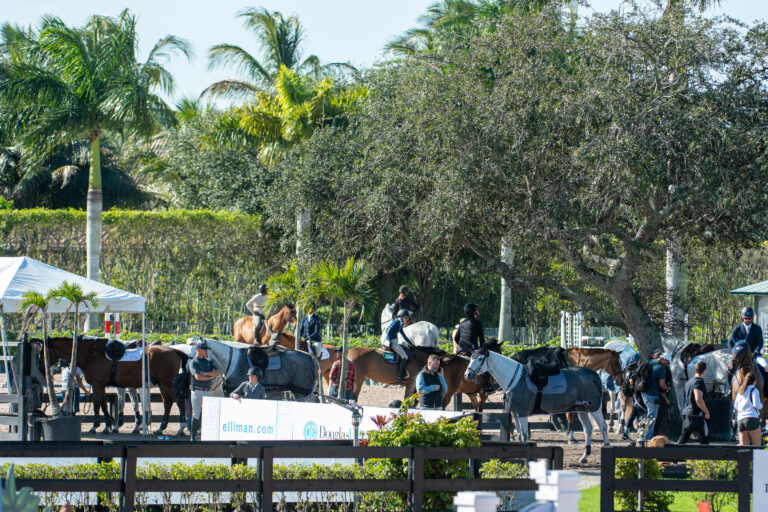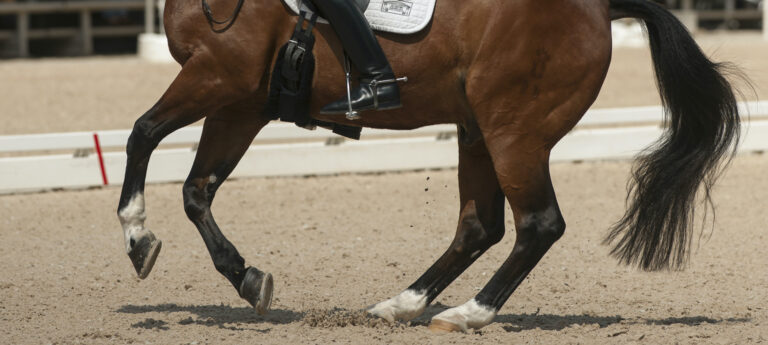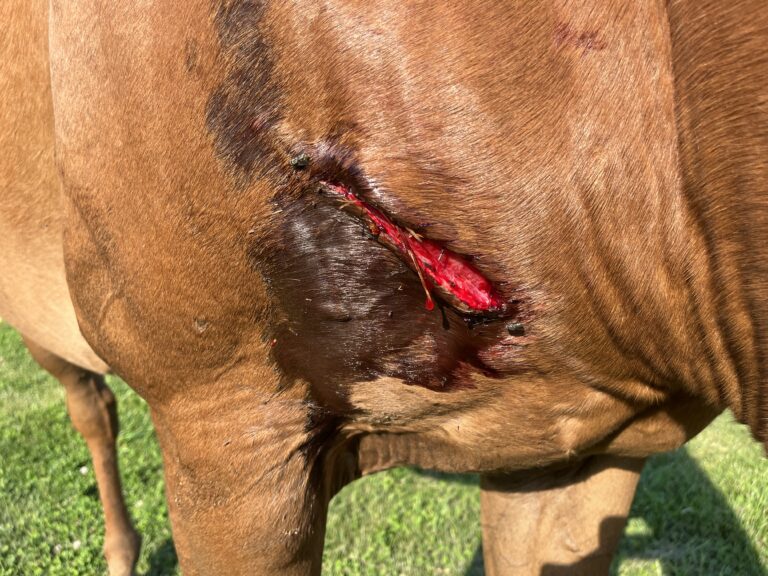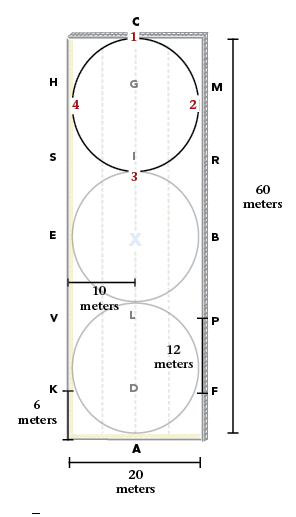Q: I am a new horse owner and am confused about the best way to feed my horse—a 5-year-old, 16-hand Thoroughbred/Quarter Horse-cross. I ride three or four times a week. I feel there are many choices in types of grain, hay and supplements. How can I tell if I’m feeding my horse correctly, and what should I keep in my feed room?
A: When your horse maintains good condition and is alert and responsive, you know you’ve hit on the correct feeding regimen. Back in the old days, there were fewer choices: You fed your horse hay, and he was out on pasture with a salt block and water. If he started to drop weight, you added some corn or some oats to his diet. Now, because there are so many products, people try to micromanage, and they get into trouble.
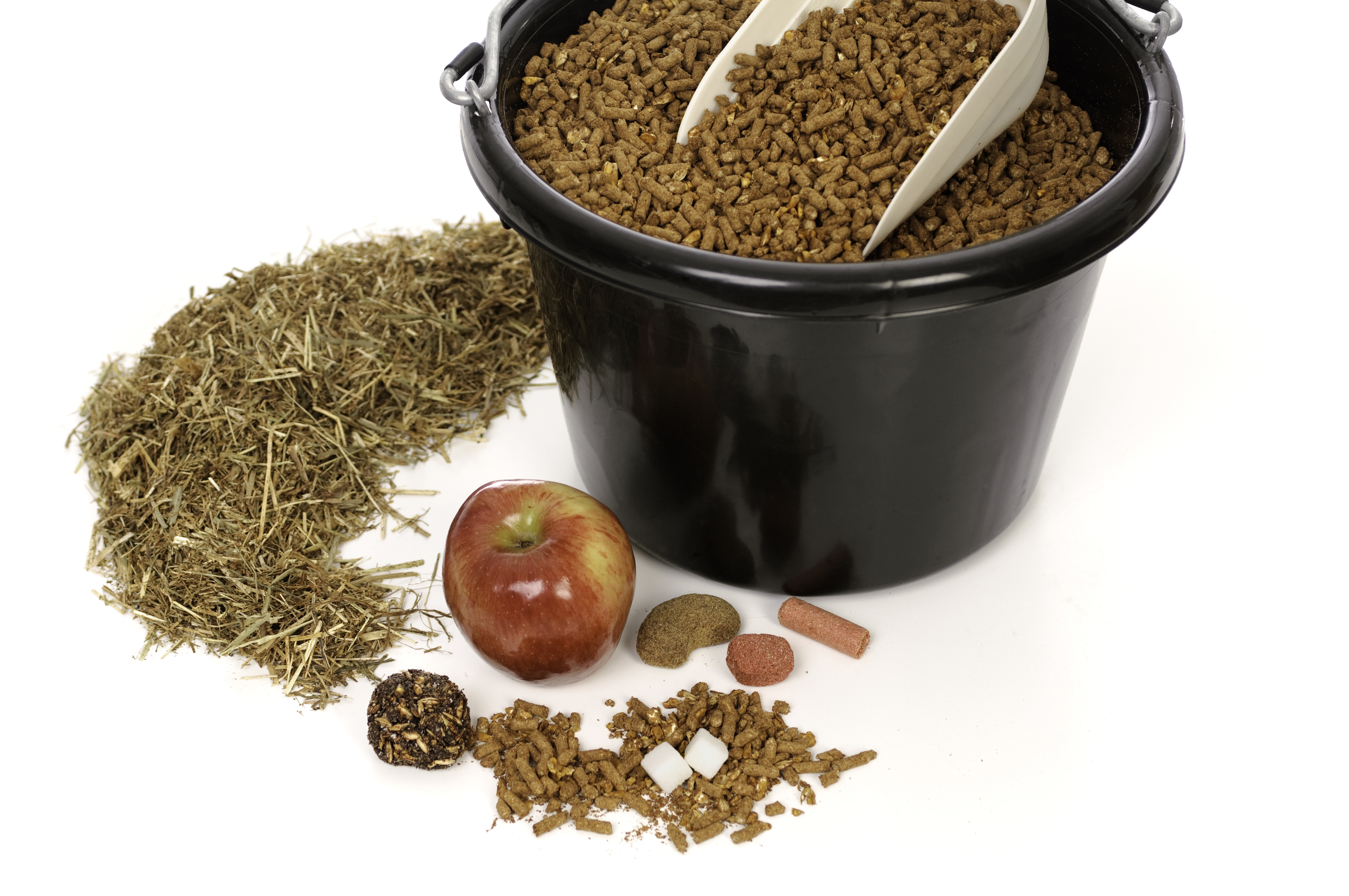
The basics for feeding any horse are hay, salt and water with only as much grain as needed for the animal to maintain good body condition. Hay still is the basis for a good feeding program because it usually can satisfy daily maintenance requirements of energy, protein, fiber, vitamins and minerals. However, depending on the quality, hay can vary in its nutritional content. For example, it can contain less than 8 percent or more than 22 percent protein. Alfalfa hay may provide much more protein than some horses need, whereas, older, yellowed grass hay might not provide enough. Protein is important for your horse’s bones, muscles and just about everything else, including coat condition. Too little protein will cause a dull coat and poor hoof quality. Too much won’t hurt your horse but will result in higher urine output (wet smelly stalls, increased water needs). For the horse you described, probably 10 to 12 percent protein in his daily diet would be plenty.
Hay analysis can be done by a county agent or any university that has an agricultural department, however, this is not always practical. A rule of thumb for testing grass hay is to look at the stem to the seed head. The longer the stem, the lower the protein. If stems on timothy hay, for instance, are about six to seven inches long, you probably would have a less than 8 percent protein hay product, and you might need to supplement with a higher protein concentrate. If the stems are all nice and short, barely coming out of the blade of grass, then the protein percentage will be higher, and you probably would not need to supplement.
Watch for moldy hay. Any hay can become moldy because of harvesting or storage problems. It can cause respiratory disease and, in rare instances, colic. Usually, horses won’t eat moldy hay, and you’ll see a lot of it wasted. Bales that are heavier than those around them may be moldy. Look for discolored patches of brown or white. Also, be sure to take a whiff. You can smell mold. Good hay is always clean, leafy and sweet smelling.
Sometimes hay can be difficult to find, especially after drought conditions. If this is the case, you can substitute forages such as hay-cube products, which are pretty good as hay substitutes. Complete beet-pulp-based rations are not really 100 percent adequate to replace hay but can be used. You need to switch slowly. In both cases, expect increased wood-chewing activity. A horse naturally spends 10 to 14 hours a day eating. A diet of only hay cubes and concentrates can be consumed in less than four hours, therefore, these horses will look elsewhere to chew.
In my experience, many people overfeed grain. Only a hardworking dressage horse, training every day at Third Level or above, might need six to eight pounds of grains along with a good quality hay, salt and water with electrolyte supplements added after a hard workout.
Adding fat in moderate amounts is one good way to keep the weight on a horse without feeding a lot of grain. However, if you start going over two cups of vegetable oil or add too much rice bran, which is popular now, you’ve got to be careful. Vegetable oil has no minerals but may increase the need for vitamin E. Rice bran is high in phosphorous, and you can get into a reverse calcium-to-phosphorous ratio if you feed too much. When phosphorous intake is higher than calcium, the horse’s body tries to stabilize things by leaching the calcium out of his bones. This causes intermittent lamenesses, and you can even get fractures.
Grass hay tends to be higher in calcium than phosphorous, but the ratio between the two is fairly narrow. If you add more than about a half pound of rice bran to that, you can push the phosphorous up to a level that would get into the danger zone, especially if you’re feeding grain or a bran product that’s not fortified with calcium.
If your horse is losing weight or is sluggish, you may need to add grain to his diet. Now you have to decide if you want a sweet feed or pelleted product. Sweet feeds containing molasses are useful for more sluggish horses because they have more carbohydrates (sugars), which may make your horse a little more energetic. Anecdotal evidence shows that some horses get more active and reactive when fed a sweet feed versus an extruded (a processed feed similar to pellets but less dense) or pelleted product, which is lower in sugar but provides the same amount of energy per pound. Oats are not a high-energy feed. Either whole or crimped, one pound of oats contains just about the same amount of energy as one pound of excellent quality hay.
Corn is a perfectly good feed for horses, but people have gotten into trouble by not understanding it. A one-pound coffee can filled with corn contains two times the amount of energy as the same amount of oats, and if you suddenly feed the corn in the same amount as you do oats, a horse can get into trouble and even founder. Corn also is prone to mold. There are many concentrate mixes out there that contain a mixture of corn, oats and/or barley with added vitamins and minerals. Choose one from a reputable company that is designed specifically for the athletic horse.
Your feed room should have one closed container for grain, if your horse needs it, with a couple of bags of hay cubes in case your hay is not the best quality. There should be extra salt blocks and some electrolytes to replace essential compounds lost through sweating for days when your horse works extra hard. That’s really all you need. Except for the most stressed-out horses, vitamin and mineral supplements are unnecessary if you’re using good quality hay and feed.
The bottom line is that your horse needs good quality hay or pasture, a 10 to 12 percent protein concentrate feed in amounts necessary to maintain good body condition (usually no more than 4 or 5 pounds per day, divided into two feedings), salt and water. You should alter fat levels only if your horse is losing weight.
Sarah Ralston, VMD, PhD, is board certified by the American College of Veterinary Nutrition and is an associate professor in the Department of Animal Science at Rutgers University. She was trained in dressage to Grand Prix.


